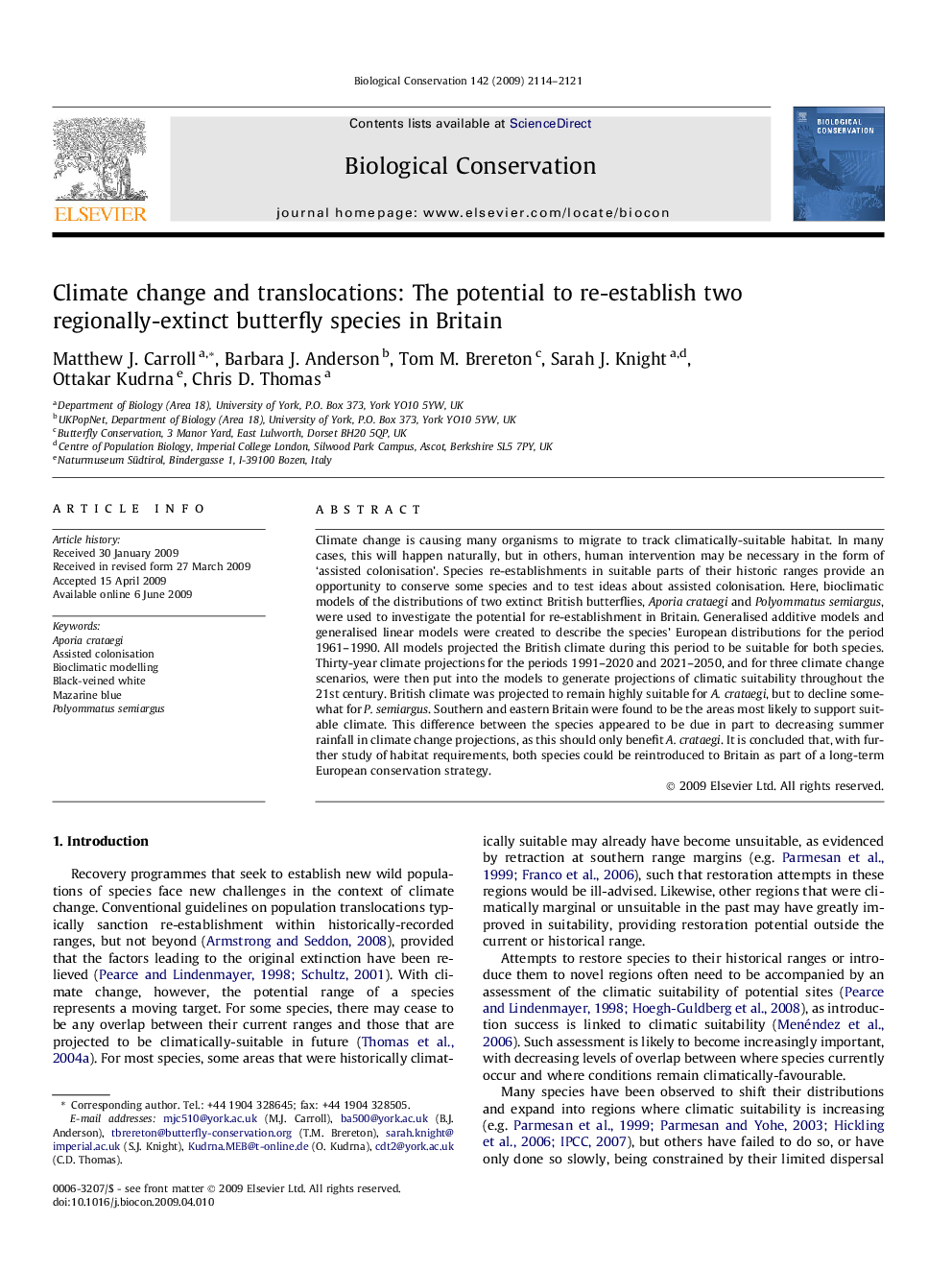| Article ID | Journal | Published Year | Pages | File Type |
|---|---|---|---|---|
| 4386207 | Biological Conservation | 2009 | 8 Pages |
Climate change is causing many organisms to migrate to track climatically-suitable habitat. In many cases, this will happen naturally, but in others, human intervention may be necessary in the form of ‘assisted colonisation’. Species re-establishments in suitable parts of their historic ranges provide an opportunity to conserve some species and to test ideas about assisted colonisation. Here, bioclimatic models of the distributions of two extinct British butterflies, Aporia crataegi and Polyommatussemiargus, were used to investigate the potential for re-establishment in Britain. Generalised additive models and generalised linear models were created to describe the species’ European distributions for the period 1961–1990. All models projected the British climate during this period to be suitable for both species. Thirty-year climate projections for the periods 1991–2020 and 2021–2050, and for three climate change scenarios, were then put into the models to generate projections of climatic suitability throughout the 21st century. British climate was projected to remain highly suitable for A. crataegi, but to decline somewhat for P. semiargus. Southern and eastern Britain were found to be the areas most likely to support suitable climate. This difference between the species appeared to be due in part to decreasing summer rainfall in climate change projections, as this should only benefit A. crataegi. It is concluded that, with further study of habitat requirements, both species could be reintroduced to Britain as part of a long-term European conservation strategy.
